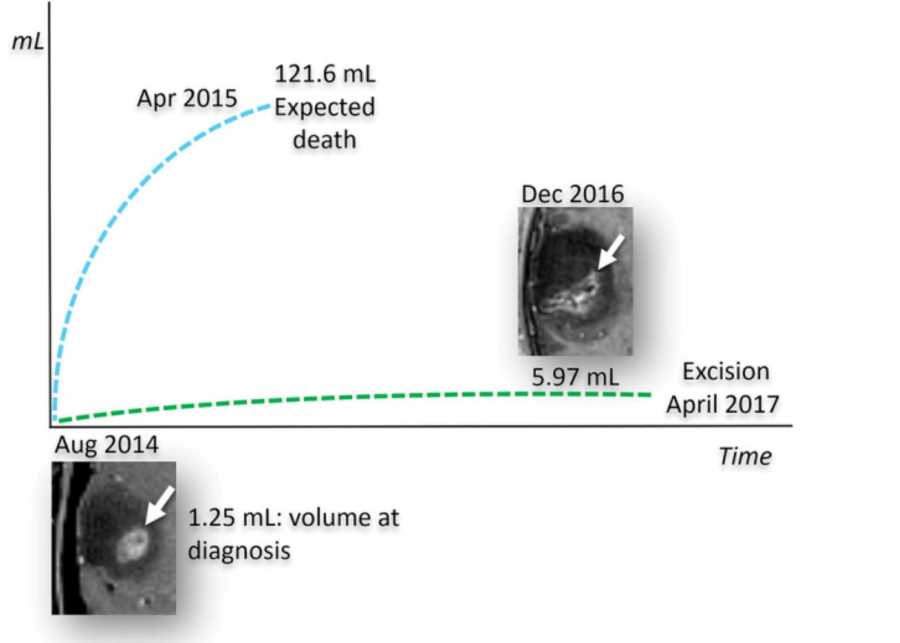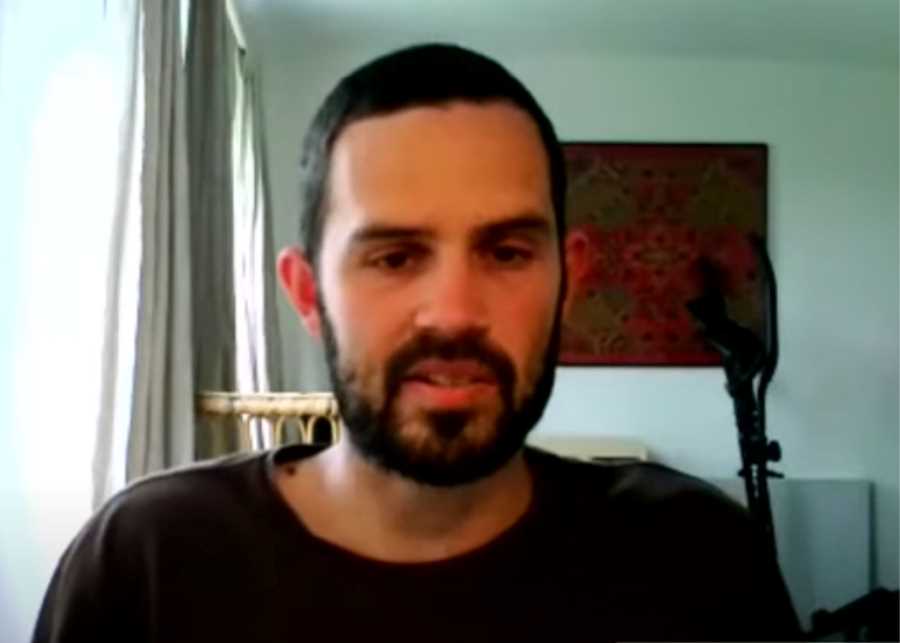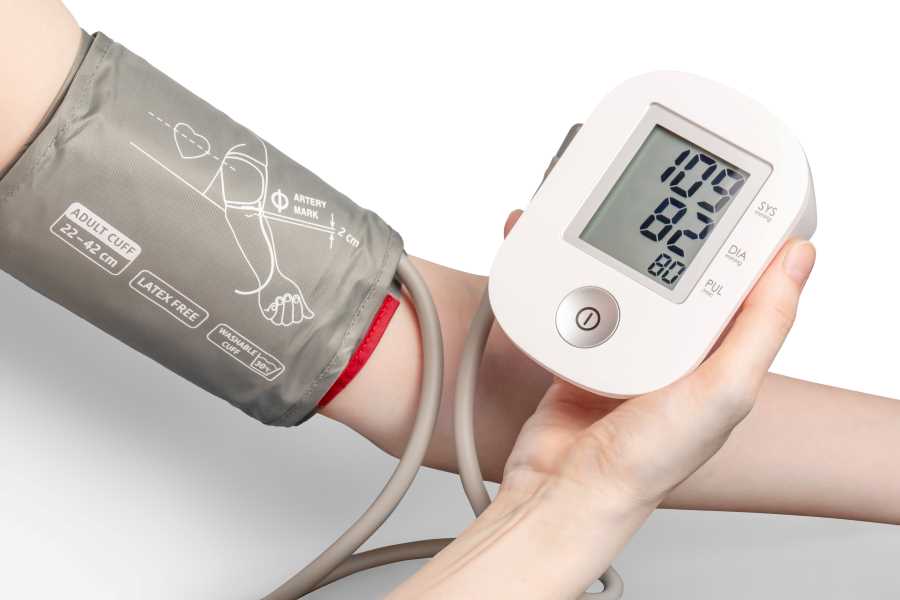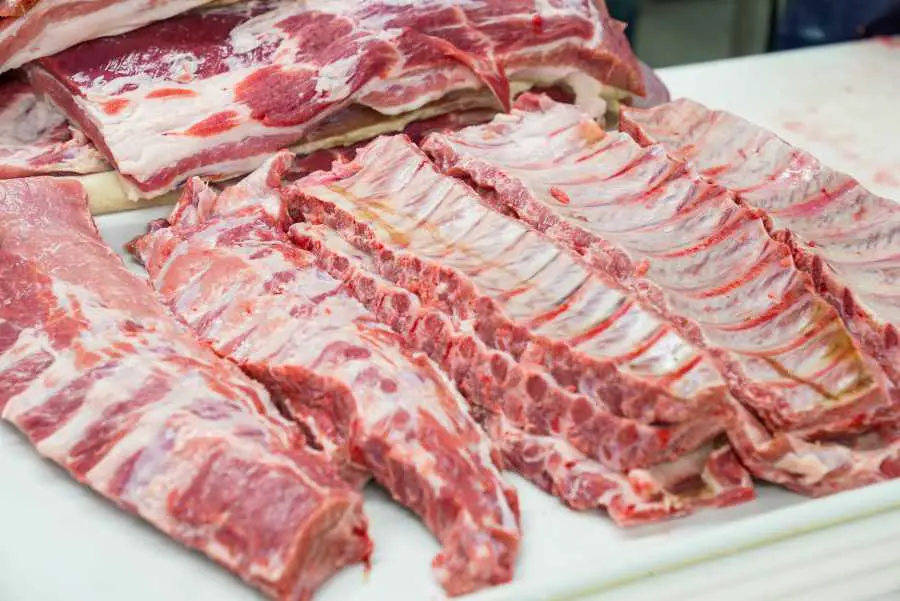Diagnosed with glioblastoma multiforme, an incurable and most aggressive form of brain cancer, Pablo Kelly was offered the standard treatment of chemotherapy and radiotherapy.
Pablo Kelly declined the standard of care which offers to extend his life for a year or so and immediately followed a restricted ketogenic diet and, later on, a strict carnivore diet.
Eight years later, Pablo Kelly remains alive with a good quality of life except for occasional seizures.
In this post, we will look at Pablo Kelly’s remarkable journey, including his initial diagnosis, the treatment he was offered and the diet that has helped him successfully manage his brain cancer.
Pablo Kelly’s brain cancer diagnosis
In 2014, at the age of 26, Pablo Kelly from Wrangaton (UK) was diagnosed with glioblastoma multiforme (grade 4 glioma brain tumor) which is the most aggressive and invasive type of tumor.
Pablo had just managed to turn his life around when he was diagnosed with brain cancer.
He used to be addicted to smoking cannabis and took recreational drugs and his diet wasn’t healthy either. But he eventually decided to sort his life out, taking care of his body and eating cleaner. He then met his current partner.
A year and a half into the relationship, Pablo began to experience constant headaches and one time had a vertigo episode.
He had a check-up and was told by his doctor that it was just a migraine aura and so he got on with it with the help of paracetamol.
However, later on, he suffered what he suspected was a stroke while at work: the left side of his face drooped, his arm went limp and his jaw sagged.
He went to see his doctor and requested a CT scan because, based on his research, he suspected something was wrong with his brain.
He was initially told that all was fine and that it was probably just a migraine aura.
However, two weeks later, the hospital called him back and said that he needed a contrast-enhanced brain MRI because there might be some sort of mass in his brain.
The MRI scan showed that there was a lesion within the brain parenchyma in the right inferior frontal lobe. The lesion was initially thought to be a low-grade glioma.
A biopsy was subsequently carried out and Pablo was eventually diagnosed with a glioblastoma multiforme on 16 September 2014.
Glioblastoma multiforme is considered the most aggressive type of tumor and has been designated Grade IV by WHO (the highest grade).
Treatment options for glioblastoma multiforme include surgery in conjunction with chemo and radiotherapy.
However, the disease has a poor prognosis and glioblastoma patients’ average survival time is only about 14 months.
Pablo Kelly’s refusal of “standard of care” for brain cancer patients
Pablo was offered the standard of care which was chemotherapy and radiotherapy.
In November 2014, Pablo went to Derriford Hospital for an appointment that he thought was with his oncologist.
However, it turned out he was there to have a radiotherapy mask fitted for his face because the hospital had fast-tracked him into radiotherapy. Despite feeling uncomfortable, he went along with it.
After getting his beard trimmed and a mask molded into his face, he suddenly felt fearful and his gut instinct told him that he shouldn’t go ahead with it.
Pablo asked to talk to his oncologist who told him that, with chemotherapy and radiotherapy, he’d expect to live for 12 to 15 months and, without treatment, he’d probably live for 6 to 9 months.
He was also told of the side effects of chemotherapy treatments such as hair loss and impotency.
In short, he was going to die soon anyway and his health would deteriorate due to the treatment.
Pablo had witnessed the sad passing of his grandfather due to liver cancer and how chemo affected him towards the end of his life and knew that chemotherapy would ultimately kill him.
When Pablo asked his oncologist about the ketogenic diet, he was told that there was no evidence that it was going to work for him.
In the end, Pablo went with his gut instinct, declined the standard treatment, and decided to take the chance with the ketogenic diet. If he was going to die anyway, he didn’t have much to lose.
Pablo Kelly’s ketogenic diet to control his cancer
Pablo consulted with Patricia Daly who was diagnosed with malignant melanoma in the eye and treated her cancer with a ketogenic diet. She is now a nutritional therapist who offers ketogenic metabolic therapy to cancer patients.
Pablo also spoke to Dr. Thomas Seyfried, Ph.D., who is a biochemical geneticist, professor of biology at Boston College, and author of the groundbreaking book “Cancer as a Metabolic Disease“.
Dr. Thomas Seyfried suggested that Pablo aims for a one-to-one ratio of ketones to glucose.
Pablo immediately followed a restricted ketogenic diet of 2,000 calories a day with less than 20 grams of carbs a day.
He fasted for the first three days because he didn’t have much money to eat and then immediately cut out all refined carbs and sugar and got into ketosis within the first week.
His daily energy intake was around 2,000 calories consisting of 1,696 calories from fat, 264 calories from protein and 48 calories from carbohydrates. This corresponds to approximately 84% of calories from fat, 13% of calories from protein and 2% of calories from carbohydrates.
He also took levetiracetam (750 mg, 2x/day) for seizure management and MCT oil (3 tsp daily with food).
He was able to maintain glucose/ketone index (GKI) values of nearly 2.0 or below (GKI refers to the molar ratio of circulating glucose over circulating ketone body).
The premise on which the ketogenic diet is used to treat cancer is that, in nearly all types of cancer, cancer cells have impaired mitochondrial function. As a result, while normal cells can survive on both glucose and ketones, cancer cells can rely on only glucose and glutamine as energy sources.
Accordingly, a high-fat and low-carb diet that restricts glucose and glutamine supply can starve cancer cells of their energy sources.
Pablo Kelly’s operation to remove the tumor
A follow-up MRI on 24 January 2015 showed no noticeable progression of Pablo’s tumor.
However, a number of subsequent MRIs carried out between April 2015 and October 2016 showed slow tumor progression relative to the original 2014 MRI.
Although this was definitely still a concern for Pablo, his tumor had grown at an extremely slow rate.
Pablo’s tumor is estimated to take 432 days to double in size whereas historical records show that, in patients with untreated glioblastoma, their tumor took an average of only 49.6 days to double.

Pablo Kelly was told that, three years after his diagnosis, his brain tumor had changed shape and it had become operable. So, in April 2017 he underwent an awake debulking craniotomy which lasted seven hours.
The operation was successful and around 90% of the tumor was removed.
Pablo recalled that post-operation he was offered standard hospital carb-rich food like toast, porridge and other carb-loaded foods and ended up resorting to eating just boiled eggs and butter during his 7-day stay.
Pablo Kelly’s cancer reoccurrence
After the operation, Pablo continued to maintain a strict ketogenic diet and kept his GKI at near 2.0 or below.
He also took a number of supplements including vitamins, minerals, turmeric, resveratrol (a plant compound mostly found in red grapes), omega 3 and boswellia serrata (an extract from the boswellia tree which is native to India).
An MRI scan done on 17 August 2017 showed no further tumor growth.
Believing that his cancer was under control, Pablo relaxed his diet somewhat. He incorporated berries and increased his calorie intake.
As a result, he put on 2 stones (28 pounds or 13 kg). His GKI values also shot up to the 5-10 range indicating an increase in blood glucose and a decrease in ketone levels.
Unfortunately, an MRI scan on 9 October 2018 showed a progression of the lesion and Pablo quickly realized that the change in his diet might have contributed to the tumor regrowth.
Pablo Kelly’s switch to the carnivore diet
Upon learning of the reoccurrence, Pablo immediately went on a strict carnivore diet.
He cut out all carbohydrates and has been eating only good quality organic animal-based food.
He has been fasting for nearly 20 hours daily and eating just two meals a day with a 4-hour eating window:
- Meal 1 eaten at around 11:00 consisted of eggs and bacon fried in ghee/butter
- Meal 2 eaten at around 16:00 consisted of steak, lamb chops, beef patties and liver, all fried in ghee, butter or lard.
While he used to precisely measure his food intake, he has learned to judge and now just eats to satiety.
His version of the carnivore diet is essentially the same as the Paleo Ketogenic Diet used by the International Center for Medical Nutritional Intervention based in Hungary to treat many chronic diseases and cancers since 2012.
He has gone off all medications except for Zebanex needed to control his seizure.
He has also stopped taking all supplements believing that he can get all nutrients he needs from food.
He also incorporates moderate physical exercises, breathing exercises and stress-reduction activities.
With his seizure, he can’t do a lot of exercises but has been exercising using a cross-trainer at home for as long as he can.
His breathing exercises (called the Buteyko Method) involve breath-holding that increases the weekly average from 15 to 60 seconds and lowers the morning average resting heart rate from 80 to 60 bpm.
With the carnivore diet, his GKI values subsequently returned to 2.0 and below. His weight also normalized at around 72 kg.
Presently, he no longer monitors his GKI closely but aims to maintain his glucose levels around 4.0.
He currently plans to stick to the carnivore diet for life.
In an interview with Dr. Shawn Baker, Pablo said that within four months of starting the carnivore diet, his tumor became stable. By going carnivore and sticking to zero-carb, he’s had three years of stable scan results.
However, in his published case report, Seyfried et al (2021) reported that MRI evaluations between 28 December 2017 and 10 March 2020 showed continued slow progression of the tumor. It’s probably that the growth has been small enough to be of concern to Pablo.
Nevertheless, eight years after his cancer diagnosis with a prognosis of 6-9 months to live without treatment, Pablo remains alive with a relatively good quality of life except for occasional tonic-clonic seizures. He also has two children via natural conception with his partner, something that is impossible for most glioblastoma patients.
No matter what happens in the future, this is a remarkable achievement when compared to the average survival time of glioblastoma patients of around 14 months.
Pablo’s neurosurgeon and oncologist said that he was extremely lucky. If he was lucky, he had created his own luck but I believe luck has very little to do with this incredible outcome.
Conclusion
This is an inspirational story that certainly gives hope to a lot of cancer patients.
There is still no cure for glioblastoma, i.e. you can not get rid of it for good. Glioblastoma cells can reproduce very quickly given the right conditions. But being diagnosed with glioblastoma does not automatically mean a death sentence. As Pablo has shown, you can certainly learn to live with it.
However, everybody is different and nobody knows if Pablo’s remarkable outcome can be successfully replicated in other cancer patients.
If you are looking at diet as a way to manage your cancer or treat your health problems, please seek advice from your healthcare providers and do your own research thoroughly.
If you want to go the diet route, as mentioned above, the International Center for Medical Nutritional Intervention in Hungary with a team of doctors and researchers has been using a high-fat animal-based diet to treat many health conditions including cancer. You may want to check out their services and see if they are able to help you (no affiliate).
References
Man with ‘inoperable’ brain tumour still alive eight years after starting keto diet
The Journey – Pablo’s Brain Journey (pablosbrainjourney.com)
Pablo Kelly – MeatRX interview
If you find this post helpful, please consider sharing this post and my site with your family, friends, and followers. That would be much appreciated. Please also check out my library of articles on the carnivore diet here which is updated regularly.
Disclaimer: The information in this post is for reference purposes only and not intended to constitute or replace professional medical advice. Please consult a qualified medical professional before making any changes to your diet or lifestyle.
Photo credit: MeatRx





